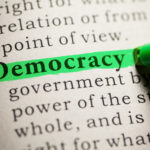It began with an ending.
J.R.R. Tolkien’s first tale of Middle-earth was of ruin, written “in hospital and on leave after surviving the Battle of the Somme.” His “first real story of this imaginary world” told of the destruction of the hidden city of Gondolin, greatest of Elven cities in mortal lands and the last stronghold against Morgoth, the Great Enemy. The story was never completed in mature form, but it was referenced in both The Hobbit and The Lord of the Rings. This saga of disaster and hope underlies the tone and setting of Tolkien’s creation. His tales of monsters and heroes illuminate the moral condition of mankind better than the works of our current adolescent popular culture. The problem is less moral ambiguity than a lack of moral will.
The various fragments and versions of the story have now been published together. In The Fall of Gondolin, the venerable Christopher Tolkien has edited his father’s unfinished work for the last time. He had described his previous effort, Beren and Lúthien, as “presumably” the last; now he writes, “in my ninety-fourth year The Fall of Gondolin is (indubitably) the last.” Only the first iteration of the story presented the complete narrative in detail, but that version is rough, with Tolkien having not yet settled on the material or style. Over subsequent years he wrote condensed or partial versions of the story, and in the incomplete final version of the tale he approaches his mature best—writing in the high prose style that he had mastered.
This book also includes materials that place the tale in context of Tolkien’s larger creation. These additional fragments are worth reading, even for those already familiar with the history of the Elder Days contained in The Silmarillion, as The Fall of Gondolin contains bits of elven mythology, history, and even eschatology not found in that volume. Overall, the collected texts and commentary by Christopher Tolkien, plus the masterly illustrations by Alan Lee, make this book a worthy final addition to the Tolkien canon.
Start your day with Public Discourse
Sign up and get our daily essays sent straight to your inbox.Publication of The Fall of Gondolin follows last year’s announcement that control of the Tolkien Estate has passed to a new generation, which seems more willing to exploit its lucrative licensing potential than Christopher and his father were. And the captains of the entertainment industry, who lack Tolkien’s moral vision and imagination, are unlikely to produce good adaptations.
But we will always have the books.
Eärendil: An Example of Hope and Mercy
Both The Hobbit and the three-volume Lord of the Rings will endure as great works even as the (ostensibly) important literature of the last century is mostly forgotten. Tolkien’s fantastic creations are unabashedly foreign in subject and style, but they are real in substance. His stories of elves, orcs, wizards, and magic rings are simultaneously more alien and more immediate than the supposedly serious literature of his time. He wrote about hobbits as if he had known them all his life, and about elves as if he visited them often; his contemporaries wrote about men and women as if they had never met any.
The Fall of Gondolin shows that this familiarity was genuine. Tolkien had been visiting elves for many years in his imagination. The rich texture of The Lord of The Rings springs from the depth of Tolkien’s creation. He had written the mythology and the history of the world he created, and even crafted its languages. This is why the references to Middle-earth’s history ring true, and the words, phrases, and even poems in Tolkien’s invented languages seem authentic, rather than a hasty hodgepodge of syllables and spellings. The glimpses of ancient legends seem real because those legends had been carefully crafted and interwoven with the world. The posthumous revelation of Tolkien’s vast creation enhances the reading of his completed works.
Gondolin and its doom were part of Tolkien’s world from the beginning, and the tale became a link between his hobbit protagonists and the deep past of the world they inhabit—a past that had been largely lost to time and violence. For readers of The Hobbit, the fall of Gondolin is the first mournful glimpse into the distant past of Middle-Earth, as Elrond identifies the swords taken from the trolls as “very old swords of the High-Elves of the West, my kin. They were made in Gondolin . . . dragons and goblins destroyed that city many years ago.” The Lord of the Rings is even more shadowed by the past, including the unpublished tales of Gondolin. As Elrond tells Frodo, “my memory reaches back even to the Elder Days. Eärendil was my sire, who was born in Gondolin before its fall.”
And Eärendil was the son of Tuor, the hero of The Fall of Gondolin. Tuor was a man of great abilities and noble lineage who was sent to the hidden city of Gondolin with a prophetic message of hope for the exiled elves of Middle-earth. If they marched forth against Morgoth, they would receive aid from the Valar, the angelic guardians and rulers of the world. But though Tuor became great among the elves of the city, even wedding the king’s daughter, his mission failed because the king had become over-fond of his great city and would not risk it by going to war. The grim result is indicated by the title of the tale, as Gondolin was discovered, betrayed, and destroyed by Morgoth’s forces in a dreadful battle. Although Tuor and his family escaped with a remnant of the people, Morgoth’s triumph seemed complete.
But from desolation and despair, hope arose unlooked-for from the union of men and elves. Eärendil was born of a mortal man and an immortal elven woman (rare and always momentous in Middle-earth). As a representative of both elves and men, he sailed to the dwelling of the Valar in the far West and begged pardon for the exiled elves and aid for the peoples of Middle-earth. And the Valar made war on Morgoth and cast him out of the world.
Tolkien never composed the tale of Eärendil except as a compressed history (readers of The Lord of the Rings may recall that Bilbo crafted some verses about it). It would have been the triumphant consummation of Tolkien’s tales of heroism amidst suffering, sorrow, and tragedy during the Elder Days. The story of Gondolin’s fall was always more than a tragic tale of heroic defeat. When resistance seemed pointless and hope lost, the remnant of Gondolin found divine mercy and help. From Gondolin’s destruction came Morgoth’s ruin.
Tolkein’s (and Our) Moral Reality
This is the moral vision that informs Tolkien’s creation. Contrary to what some critics have claimed, Tolkien does not present a simplistic moral universe—good guys versus bad guys. The monstrous physical manifestations of evil in Tolkien’s work do not occlude the moral struggles in the hearts of men (and elves, dwarves, hobbits, and so on) but illuminate them. The threat of monsters puts men to the test. The moral challenges Tolkien emphasizes are to do good when evil seems expedient, to resist evil when opposing it seems futile, and to avoid complacency when it seems quiescent.
The sometimes overwhelming power of evil—physically incarnate in the Dark Lords (Morgoth and later Sauron) and the monsters they create and command—must be resisted even when evil’s triumph seems inevitable. We cannot rely on secrecy and strongholds, whose purpose is to preserve and cultivate strength that will eventually confront evil. And although physical courage is important for those combatting evil in Tolkien’s world, it is not sufficient. Turgon, the king of Gondolin, undoubtedly was courageous in facing physical danger and even death, but he would no longer take risks to defeat evil, even with the promise of triumph through divine aid.
Of course, such divine help is not always promised, either in our universe or in Middle-earth. We are not masters of the world, and cannot always know when our struggle might bear fruit. We may be unexpectedly victorious, or our defeat may nonetheless create the circumstances for a future victory. What we must not do is give in to evil or despair. In Tolkien’s tales, evil’s greatest successes require not just monsters and machinations, but the weakness and wickedness of free men, elves, and others.
Tolkien’s work illuminates how moral weakness is the real problem of the human condition, not moral dilemmas and uncertainty. The latter are rare, the former is ubiquitous. I rarely do wrong because I do not know what is right; I often do wrong because it is fun, easy, or otherwise attractive.
Tolkien was not a moral simpleton but a moral realist. He could write of tragedy and moral ambiguity (see The Children of Húrin, for instance), but he knew that we mostly lack the will to do right, rather than the knowledge of what is right, and so his tales bring the moral imagination to the aid of the will. By identifying with his heroes, we want to choose to do right, but are constantly reminded of our capacity to give in to temptation and do wrong. His works do not fill readers with assured self-righteousness. His heroes are heroic not because they are morally incorruptible, but because they could be corrupted (if not to active evil, then certainly to despair), but resist the temptation. In The Lord of the Rings, Frodo eventually succumbs to the Ring, but is saved because of his previous mercy.
This profound moral universe began when, having survived the mud and death of the Great War, Tolkien not only imagined heroes, glory, and splendor for us, but depicted hope after ruin and tragedy. The fall of Gondolin was a new beginning in Middle-earth.













